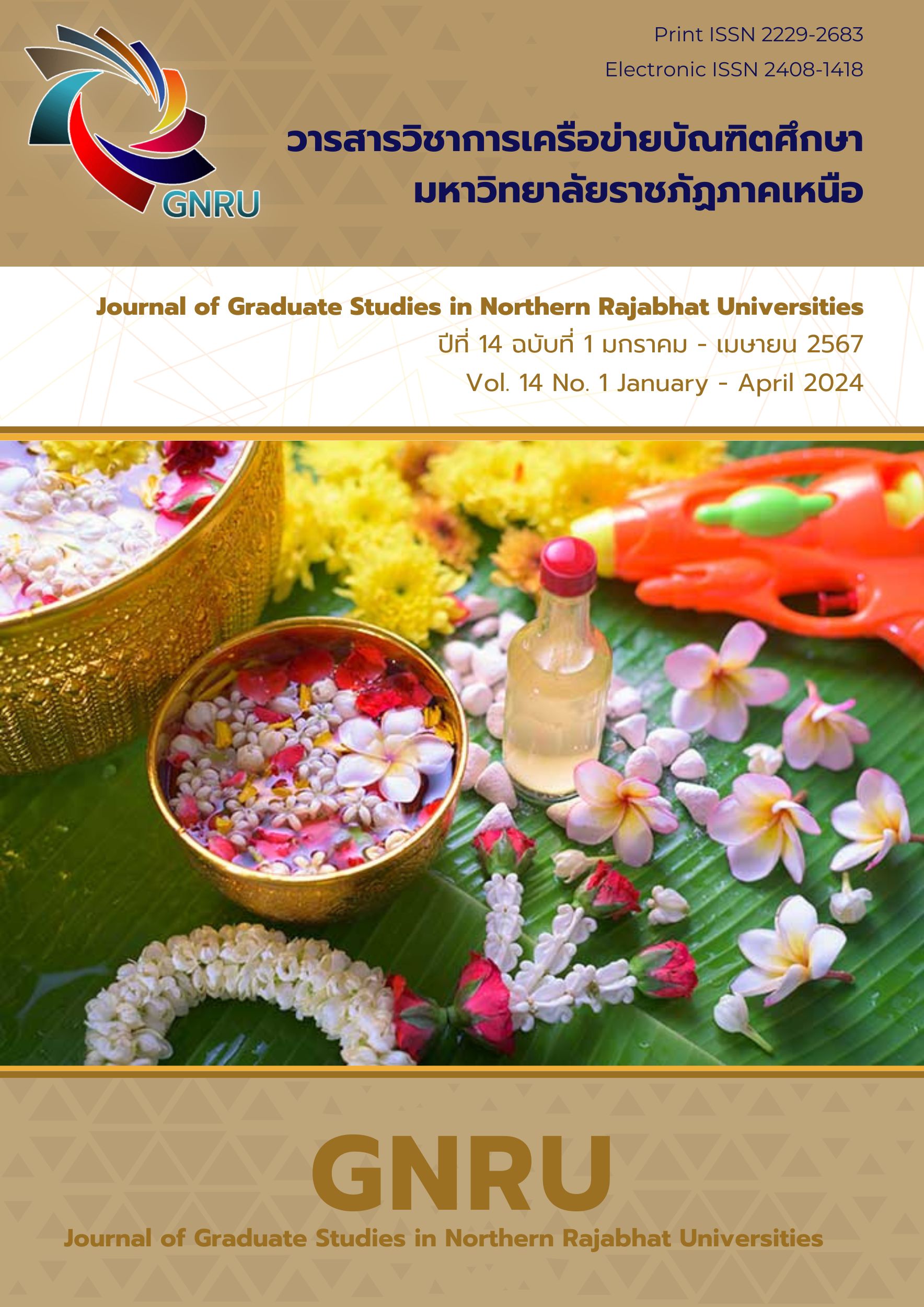3 CASH FLOW, PROFITABILITY AND GUIDELINES FOR VALUING SHARES OF LISTED FINANCIAL INDUSTRY GROUPS IN THE STOCK EXCHANGE OF THAILAND
Main Article Content
Abstract
This research aimed to study 1) cash flow and profitability that affect the valuation of shares in the financial industry groups, and 2) guidelines for valuing shares of stocks in the financial industry groups listed on the Stock Exchange of Thailand. The sample groups studied were the financial industry groups listed on the Stock Exchange of Thailand 2018-2022, totaling 14 companies. Data was collected using information from the website of the Securities and Exchange Commission of Thailand, namely financial statement data from the SETSMART system database. Data was analyzed using stepwise multiple regression analysis. The research findings were as follows:
- 1. Cash flow from operating activities (CFO) is on average in the negative direction whereas cash flow from investing activities (CFI) is on average in the negative direction. Cash flow from financing activities (CFF) on average is in a positive direction due to the business expansion phase. The return on equity (ROE), return on assets (ROA), and net profit margin (NPM) are at a high level. The stock price (Price), dividend yield (DY), market price to net profit ratio (PE), and market price to book value ratio (PBV) are in line with other factors in a positive direction.
- 2. Guidelines for valuing shares of stocks in the financial industry groups listed on the Stock Exchange of Thailand include the comparable approach, income approach, asset approach, and other valuation methods including using other financial information that affects a stock's value, such as financial ratios, investment returns, and risk premiums.
Article Details
References
AM Broker. (2019). Depositing money into a Forex trading account. Available on https://traderider.com/index.php?topic=14568.0 (retrieved 22 Oct 2023)
Bank of Thailand. (2022). Financial business under the supervision of the Bank of Thailand. Available on https://www.bot.or.th/content/dam/bot/thailand-financial-institutions-and-financial-service-providers/Financial%20Business%20under%20the%20BOT%20supervision
%20(TH).pdf (retrieved 20 Oct 2023)
Chalothorn, N. and Rangkakulnuwat, P. (2021). Relationship between cash flow and profit returns of companies on the Stock Exchange of Thailand. Information and Communication Technology Group, 2010-2019. In the National Graduate Research Presentation Academic Conference. Khon Kaen University, 22(1), (774-784).
Phromkhot, P. and Chanjarat, N. (2017). Cash flow, returns of securities and operating results of companies listed on the MAI Stock Exchange. Journal of Business Administration and Accounting. Khon Kaen University, 1(3), 35-50.
Longtunman. (2019). What is dividend payment? Available on https://www.longtunman.com/38106 (retrieved 21 Oct 2023)
MAI Stock Exchange (2020). Securities registration. Available on https://portal.set.or.th/th/faqs/listing_p1.html (retrieved 20 Oct 2023)
Meechana, J. and Khamsuprom, S. (2017). A study of the influence of cash flow on Financial structure: Company listed on the Stock Exchange of Thailand. (Master of Accounting), Dhurakij Pundit University.
Meawbin Investor. (2016). ROA (Return on Assets). Available on http://www.meawbininvestor.com/roa-return-on-assets/ (retrieved 22 Oct 2023)
Money Buffalo. (2020). BEST of stocks 2020. Available on https://www.moneybuffalo.in.th/stock/best-of-stock-2020 (retrieved 22 Oct 2023)
Puangbubpha, N. (2019). Relationship of cash flow to market value and dividend rate. Returns of companies listed on the Stock Exchange of Thailand. Independent study, Faculty of Accountancy, Sripatum University.
Rojkurisathian, S. (2004). Tax accounting of businesses receiving investment promotion. Bangkok: Dharmniti Press.
Stock Exchange of Thailand. (2022). What are stocks? Available on https://member.set.or.th/
education/th/begin/stock_content01.pdf (retrieved 20 Oct 2023)
Srisuchat, S. (2004). Stock market in Thailand. Bangkok: Stock Exchange of Thailand.


